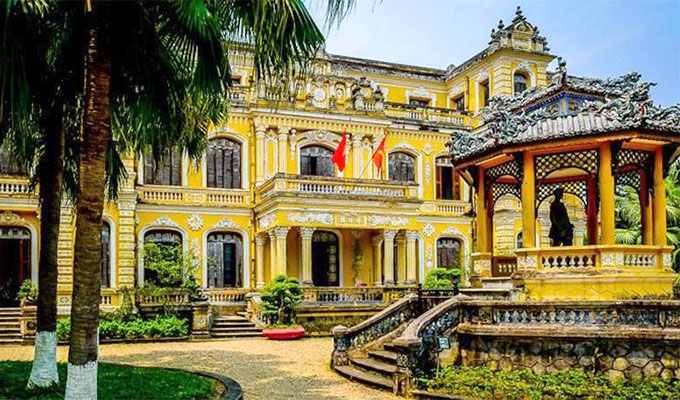A data digitisation project has been implemented in the Complex of Hue Monuments in the central province of Thue Thien-Hue to improve the management and preservation of Tu Duc Tomb and An Dinh Palace.

A corner of An Dinh palace in the Complex of Hue Monuments
The project is a partnership between the Hue Monuments Conservation Centre, and two US firms - CyArk and Seagate Technology.
Accordingly, all the data and images capturing Tu Duc Tomb and An Dinh Palace will be turned into photo-real 3D models to help enhance the efficiency and accuracy of the research, conservation and restoration of Hue Monuments.
Director of the Hue Monuments Conservation Centre Phan Thanh Hai said CyArk and Seagate Technology are leading providers of data storage solutions in the world and this is the first time they have worked on an important cultural preservation project in Vietnam.
Technologies provided by Seagate enable CyArk to store, protect and process safely the relevant data that it collects, he said.
To implement the project, CyArk conducted aerial surveys by unmanned aircraft drones, terrestrial laser scanning known as LiDAR, and field observation at Tu Duc Tomb and An Dinh Palace. CyArk will produce 3D models and architectural drawings to aid the Hue Monuments Conservation Centre in the conservation and management of the site.
Seagate and CyArk will support each other both in the field and the office with their data-storage solutions.
Hai said the effectiveness of this project is not only reflected in the aspect of advanced storage technology to help manage, preserve Hue’s relic sites with 3D models and promote cultural values of the complex, but also helps popularize knowledge of history, culture and architecture to people, especially youths, thus raising their awareness of protecting the national culture heritage sites.
The digital preservation project also helps promote the global prominence value of Tu Duc Tomb - the relic site that has important cultural significance for Vietnamese people, he added.
The Complex of Hue Monuments site has suffered from the effects of wars, as well as modern development and expanding human settlements. In addition, climate change and natural disasters such as floods are other potential problems for the long-term management of the munuments.
The central province of Thua Thien-Hue has put many efforts to preserve and restore relics of the UNESCO-recognised Complex.
The province has allocated over 1.46 trillion VND (64.24 million USD) for funding the relic preservation and restoration between 1996 and 2017, including 933 billion VND (41 million USD) for the 2010-2017 period.
The Prime Minister approved an Adjusted Planning Framework for the Complex of Hue Monuments from 2010-2020 in June 2010, laying grounds for the province’s preservation work.
As the result, more than 170 relics have been preserved, repaired and restored so far, including Ngo Mon (Meridian Gate), Dien Thai Hoa (Palace of Supreme Harmony), Hien Lam Cac (Pavilion of Radiant Benevolence from On-High), The Mieu (Complex of the Temple for the Worship of the Nguyen Emperors), Cung Truong Sanh (Truong Sanh Royal Palace), Dan Nam Giao (Esplanade of Sacrifice to the Heaven and Earth), Tomb of King Gia Long and Chua Thien Mu (Celestial Lady Pagoda).
The Hue Monuments Conservation Centre has carried out several studies to learn about ancient brick flooring, wells and history of each monument inside the complex. It has also collected royal decrees of the Nguyen Dynasty, produced publications on royal records and heritages and made archives of Nha Nhac (Royal court music) - intangible heritage recognised by UNESCO in 2003.
The centre has been supported by international foundations, institutes and organisations from Japan, the US, France, Germany and Poland, which provided funding for the conservation and training for its staff to improve their capacity.
Japan has provided aid for relic conservation in Hue since 1990. The first large-scale project with Japanese funding, 100,000 USD, was to restore the Ngo Mon – the main gate to the Hoang Thanh (Imperial City) and a symbol of Hue.
A team of experts from Germany helped restore frescos in An Dinh Palace while those from Poland have supported the province in white ant prevention and restoration of To Mieu Temple Complex.